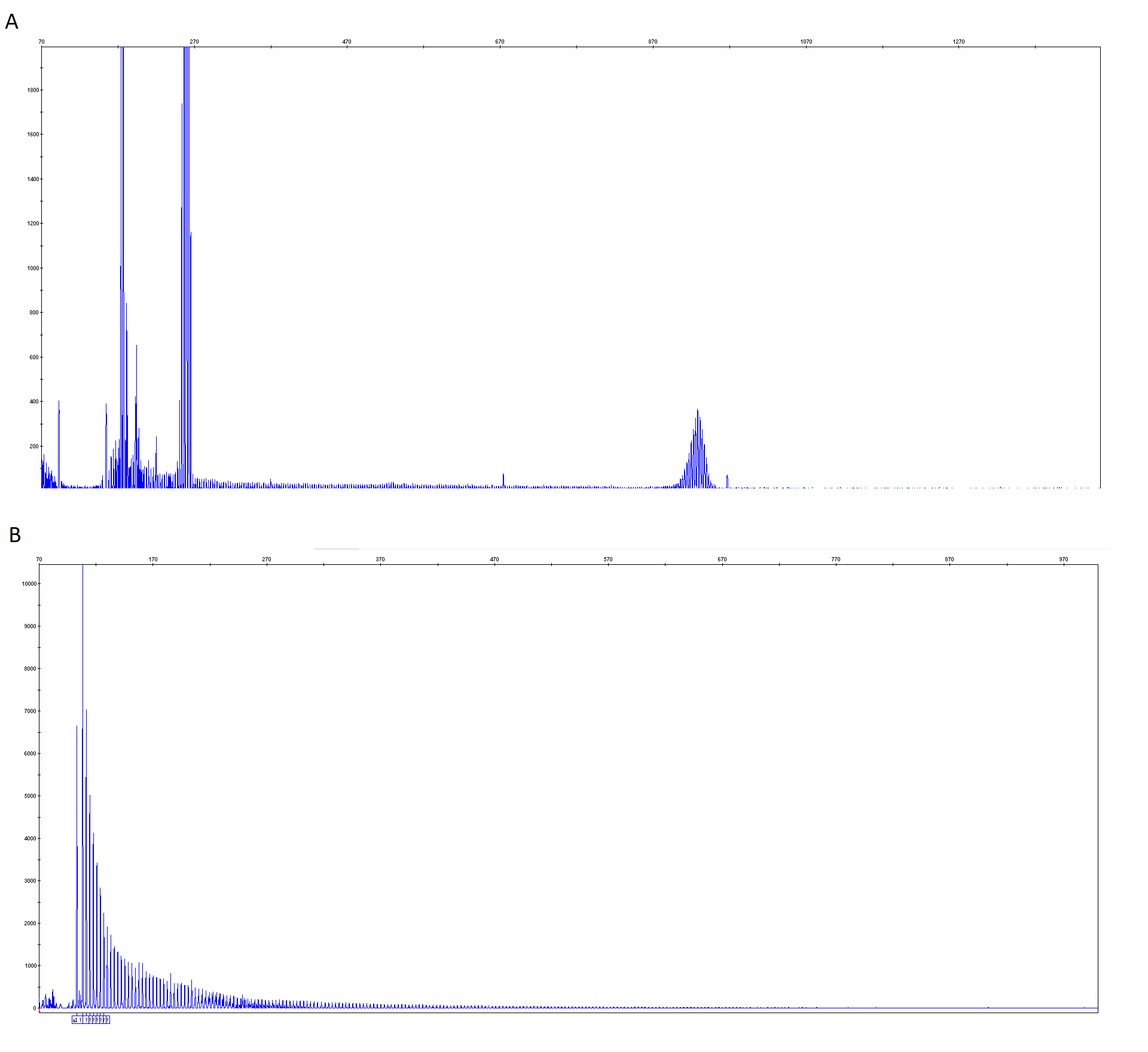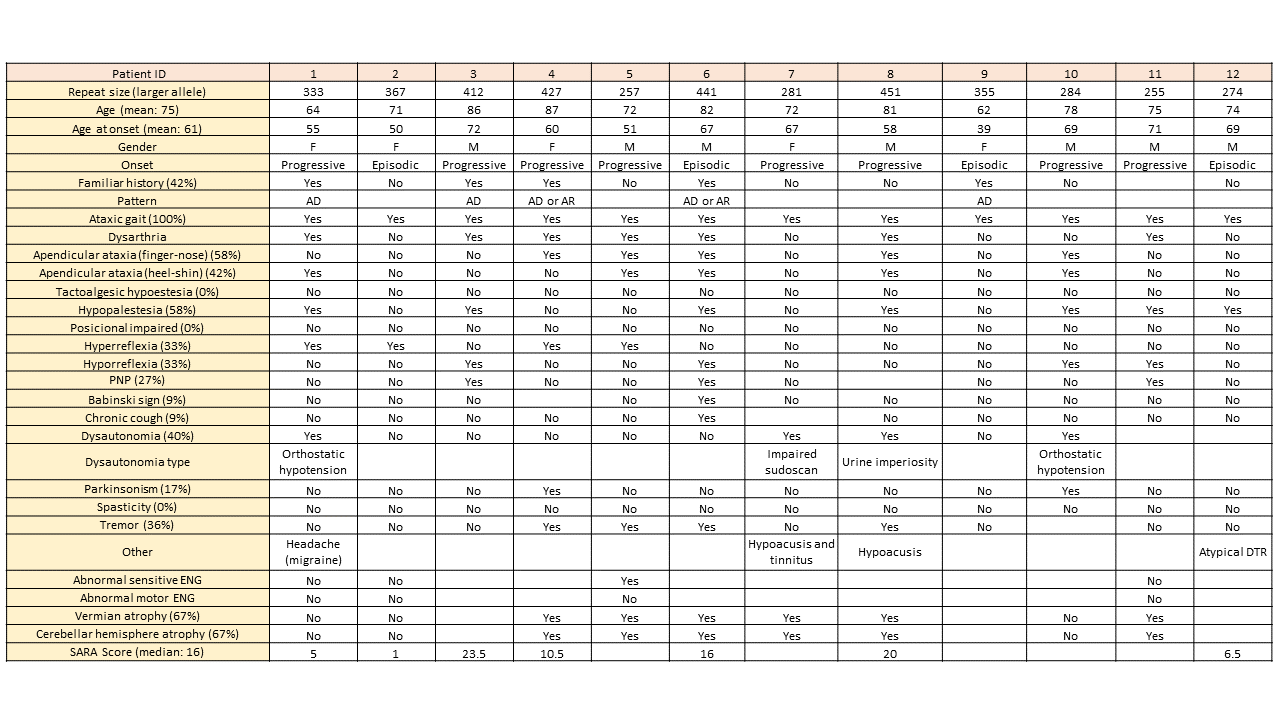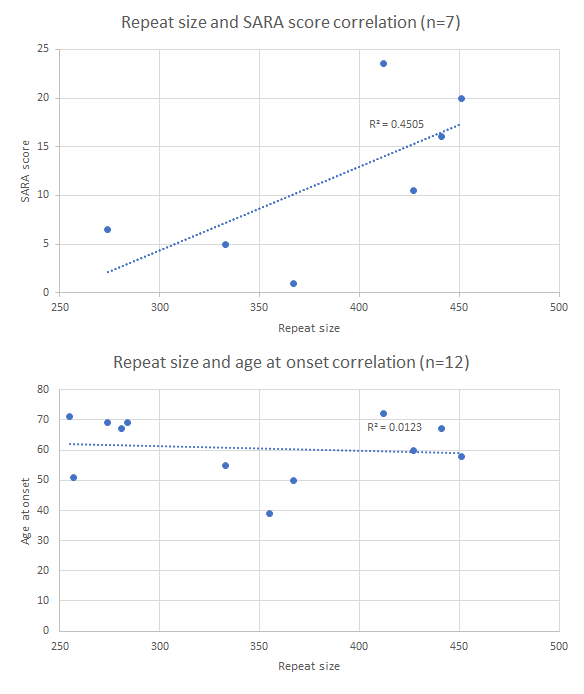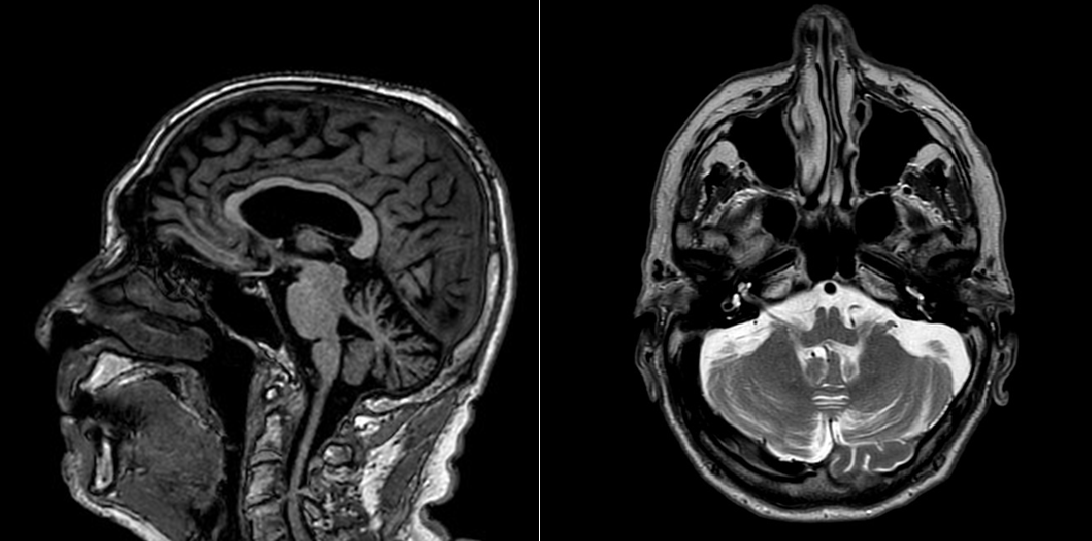Category: Ataxia
Objective: To describe the main features of a series of 12 patients with GAA-FGF14 ataxia.To describe the main features of a series of 12 patients with GAA-FGF14 ataxia.
Background: GAA-FGF14 ataxia, also known as SCA 27B, has been recently described as a new and common cause of late onset ataxia[1, 2]. Heterozygous expansions larger than 250 GAA repeats in the intron 1 of FGF14 have been considered pathogenic[1].
Method: We screened 48 patients with late onset ataxia (>30 years old) of unknown cause. The presence of pathogenic expansions in FGF14 gene was studied by long-range PCR and repeat primed-PCR as previously described [3] [Figure 1]. This study was approved by the Ethics Committee of the Donostia University Hospital and patients signed a written informed consent.
Results: Twelve out of 48 patients presented a GAA pathogenic expansion in intron 1 of FGF14 (25%) [Table 1]. Seven of them were male (58%). Median age at onset was 61 years old. Three of them had an episodic onset (25%) while the others present as a progressive ataxia. Seven of the patients (58%) had not personal history of ataxia, while the other 5 (42%) showed a positive family history. All of them showed ataxic gait while 50% of the individuals showed appendicular ataxia in finger-nose or heel-shin tests. SARA score was available in seven of the patients showing great variability ranging from 1 to 23, (median: 16). Repeat size positively correlate with SARA score without reaching statistical significance (R2=0.45, p=0.099) but not with age at onset (R2=0.01, p=0.731) [Figure 2].
Regarding additional neurological symptoms, none of the patients showed hypoestesia, while 7 showed hypopalestesia (58%). Any of these patients showed clear spasticity, although hyperreflexia was found in four patients (33%), while hyporreflexia was present in other four (33%). Four of the patients (33%) showed some kind of dysautonomia. Regarding neuroimaging, 6 out of 10 brain MRI showed cerebellar atrophy (both vermian and hemispheric) [Figure 3].
Conclusion: GAA-FGF14 ataxia has been recently discovered; however, it is a frequent cause of late onset ataxia (25% of patients tested in our series). It is characterised by a pure cerebellar ataxic syndrome. Some of the patients started with episodic features and developed lately a progressive ataxia. In our cohort, repeat size has a weak positive correlation with SARA score (n=7) while there was no correlation with age at onset.
References: 1. Pellerin D, Danzi MC, Wilke C, et al (2023) Deep Intronic FGF14 GAA Repeat Expansion in Late-Onset Cerebellar Ataxia . N Engl J Med 388:128–141. https://doi.org/10.1056/nejmoa2207406
2. Rafehi H, Read J, Szmulewicz DJ, et al (2023) An intronic GAA repeat expansion in FGF14 causes the autosomal-dominant adult-onset ataxia SCA50/ATX-FGF14. Am J Hum Genet 110:105–119. https://doi.org/10.1016/j.ajhg.2022.11.015
3. Bonnet C, Pellerin D, Roth V, et al. Optimized testing strategy for the diagnosis of GAA-FGF14 ataxia. medRxiv. 2023:2023.02.02.23285206. doi:10.1101/2023.02.02.23285206
To cite this abstract in AMA style:
P. Iruzubieta, D. Pellerin, J. Ruiz, A. Bergareche, E. Mondragon, I. Albajar, J. Equiza, G. Nuñez, P. Arratibel, F. Moreno, J. Poza, M. Ruibal, R. Fernández-Torrón, A. Vinagre, I. Croitoru, M. Dicaire, B. Brais, H. Houlden, A. Lopez Munain. Description of a series of GAA-FGF14 ataxia / SCA27b patients [abstract]. Mov Disord. 2023; 38 (suppl 1). https://www.mdsabstracts.org/abstract/description-of-a-series-of-gaa-fgf14-ataxia-sca27b-patients/. Accessed January 1, 2026.« Back to 2023 International Congress
MDS Abstracts - https://www.mdsabstracts.org/abstract/description-of-a-series-of-gaa-fgf14-ataxia-sca27b-patients/




